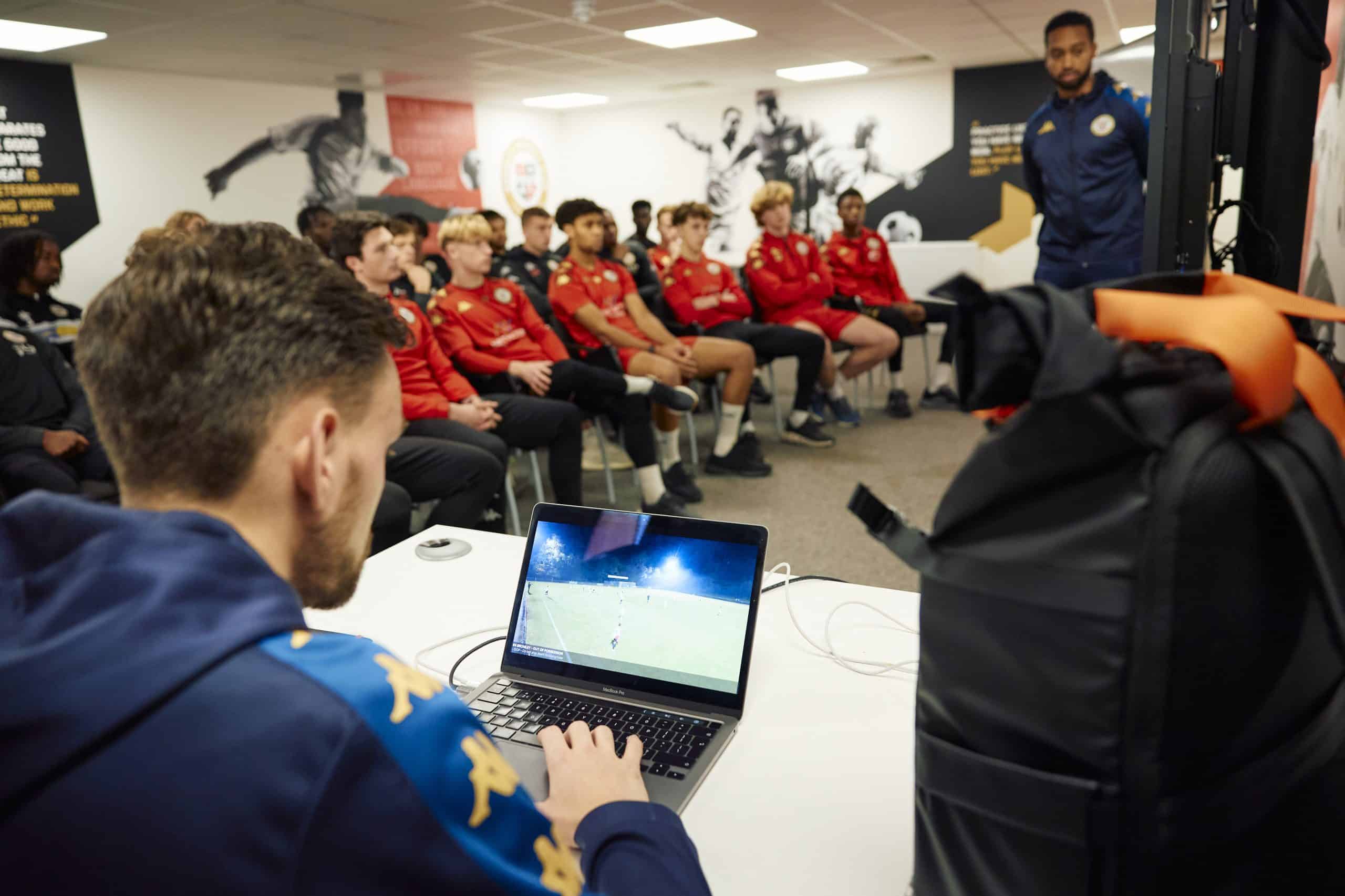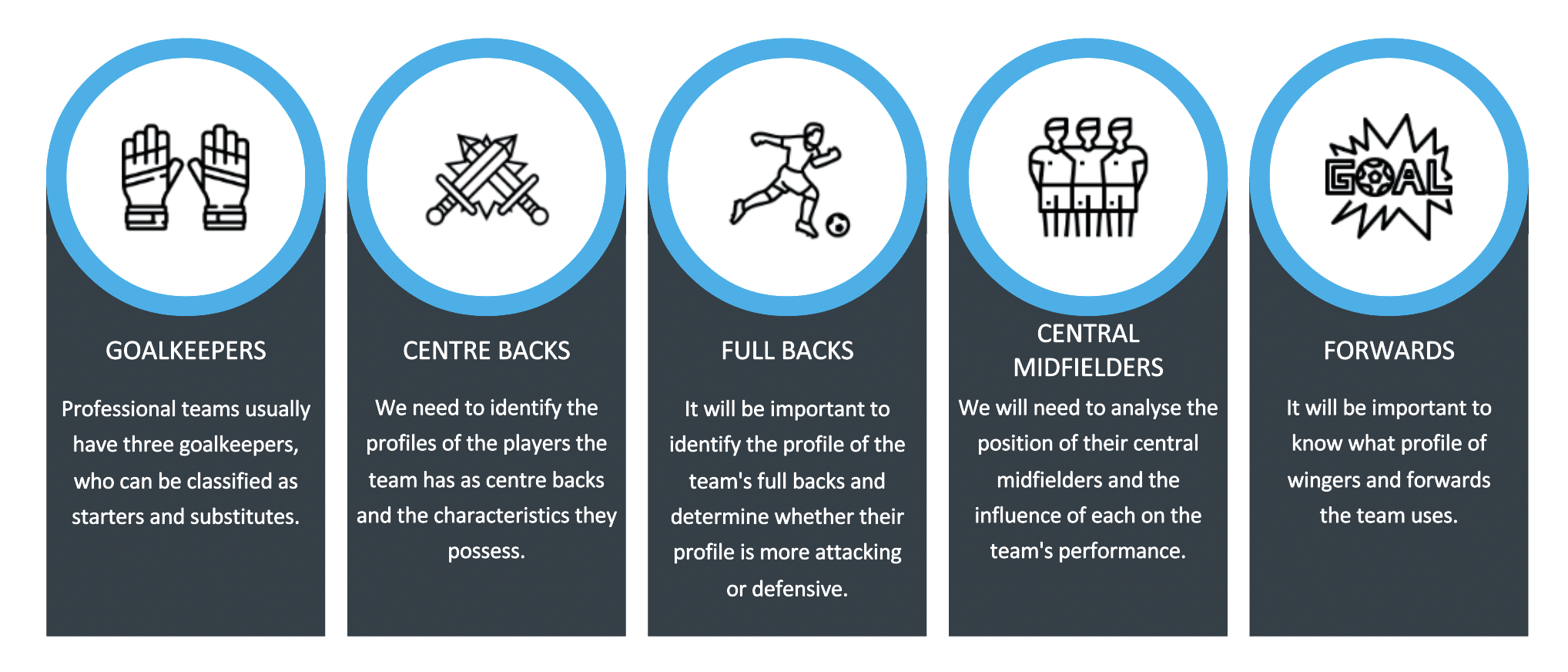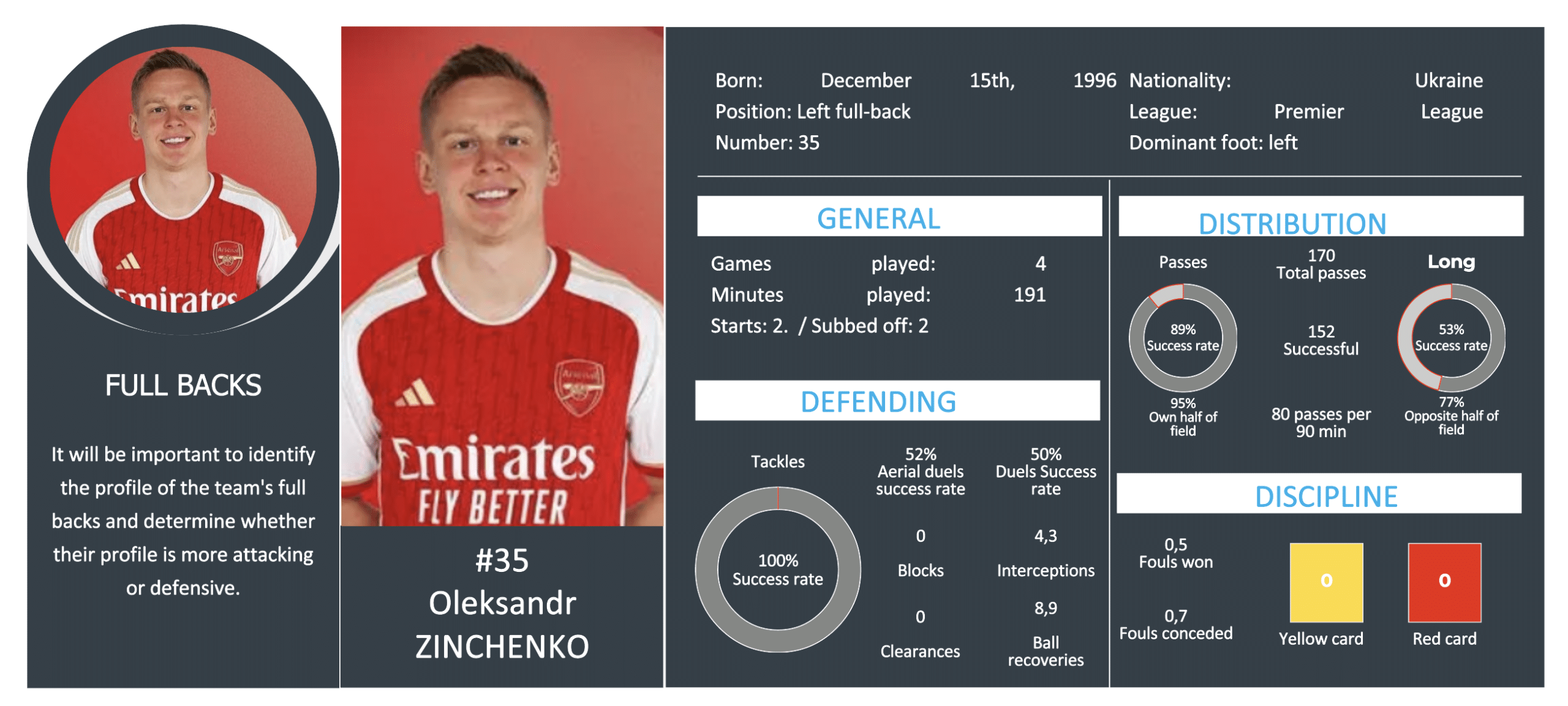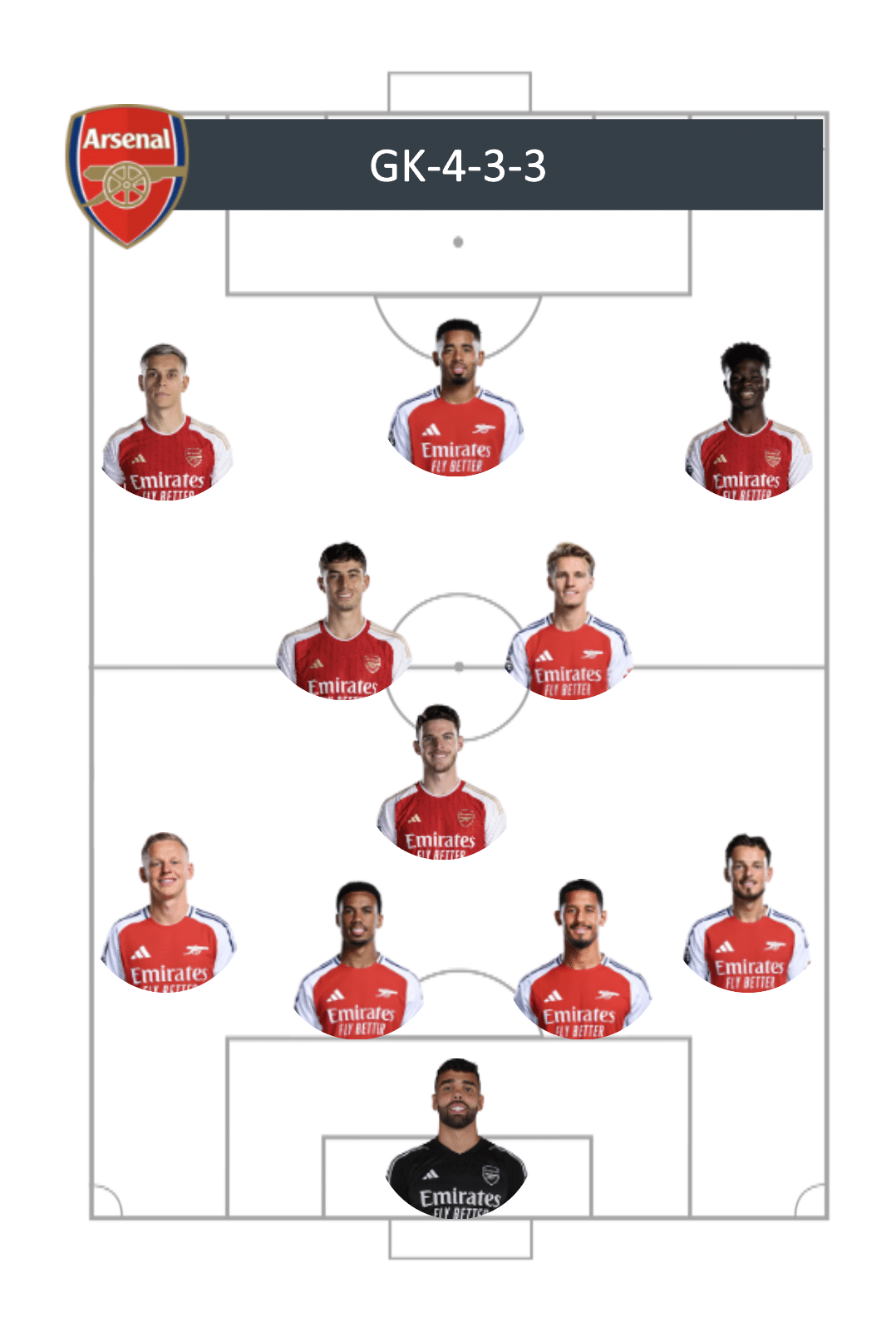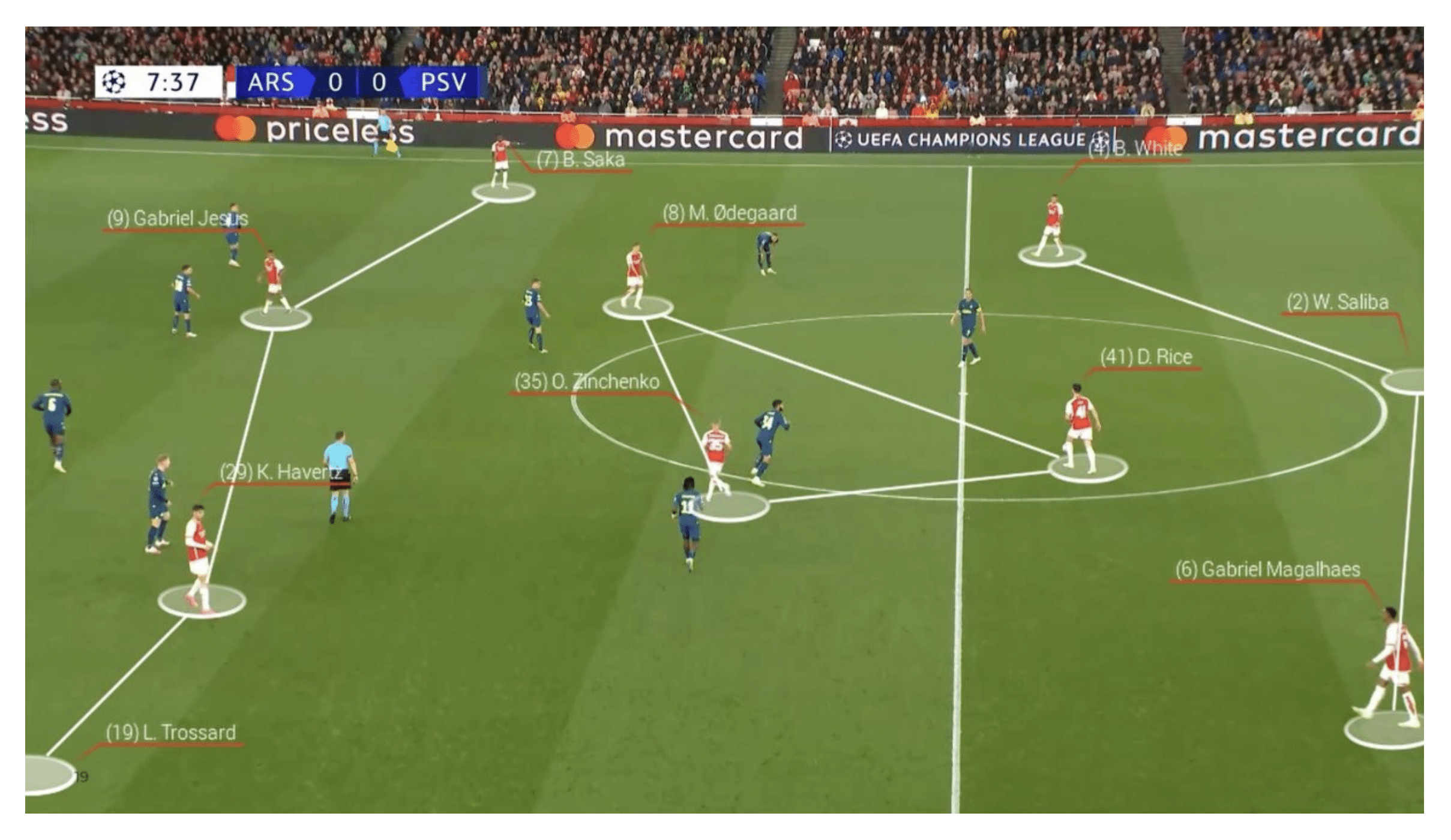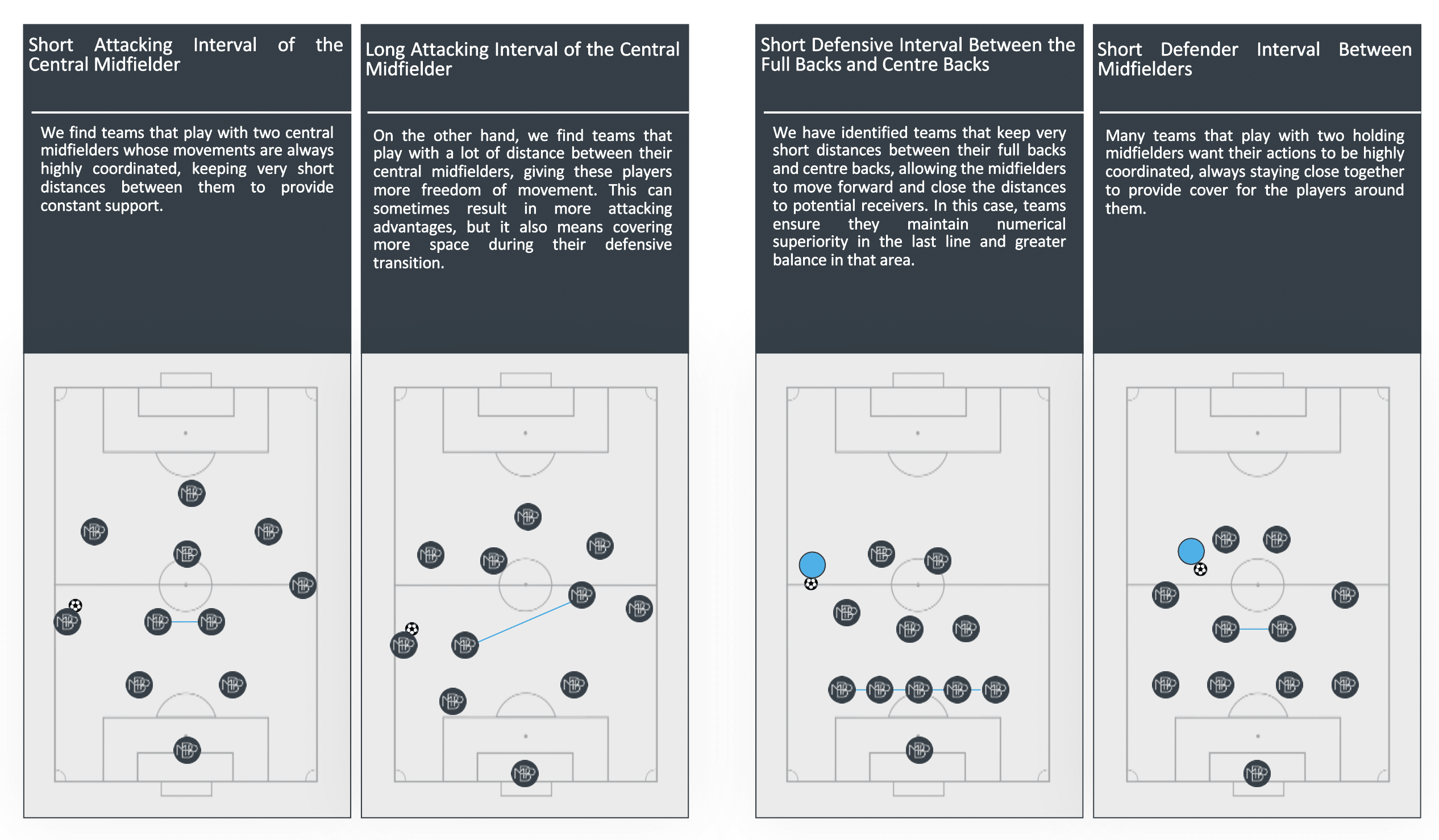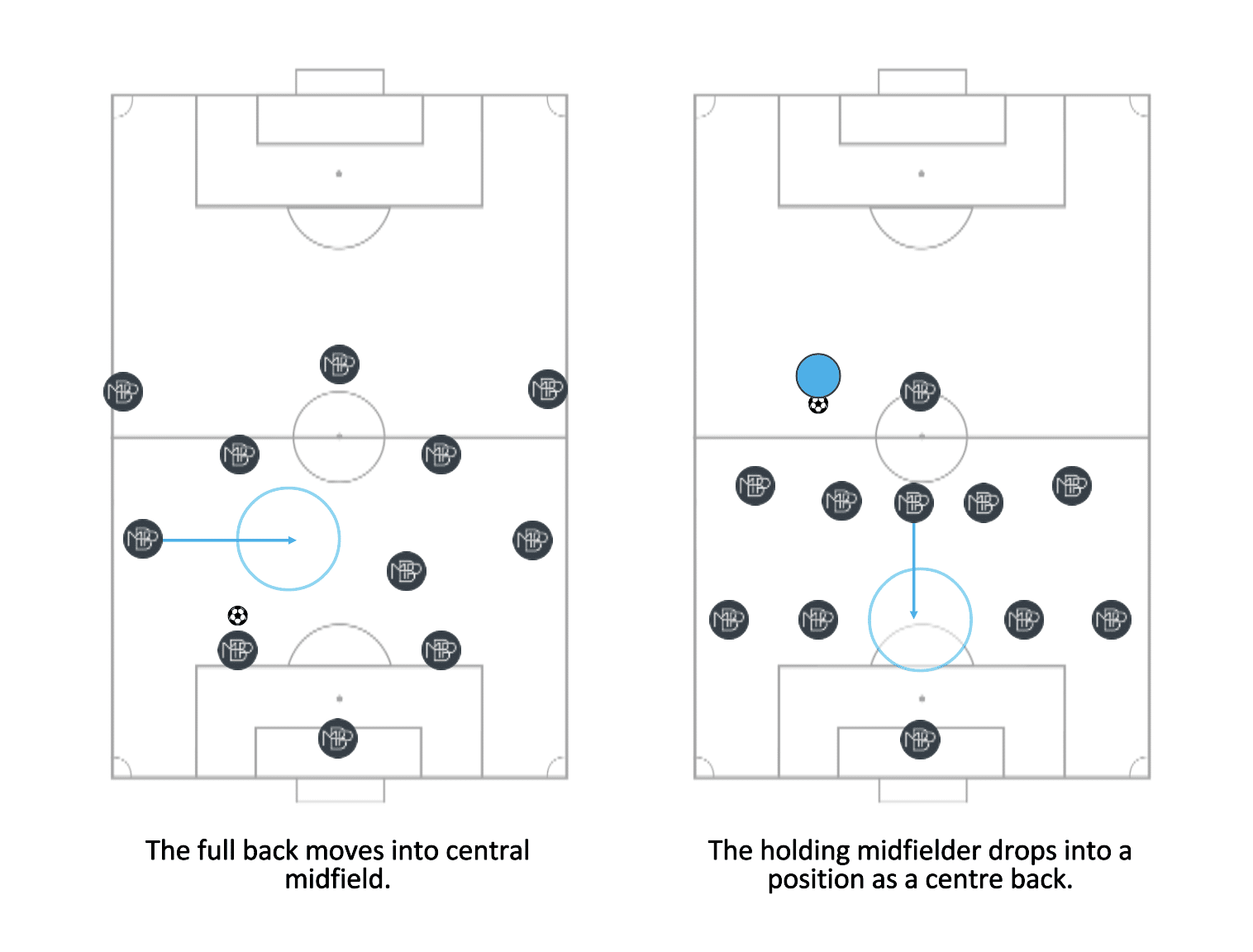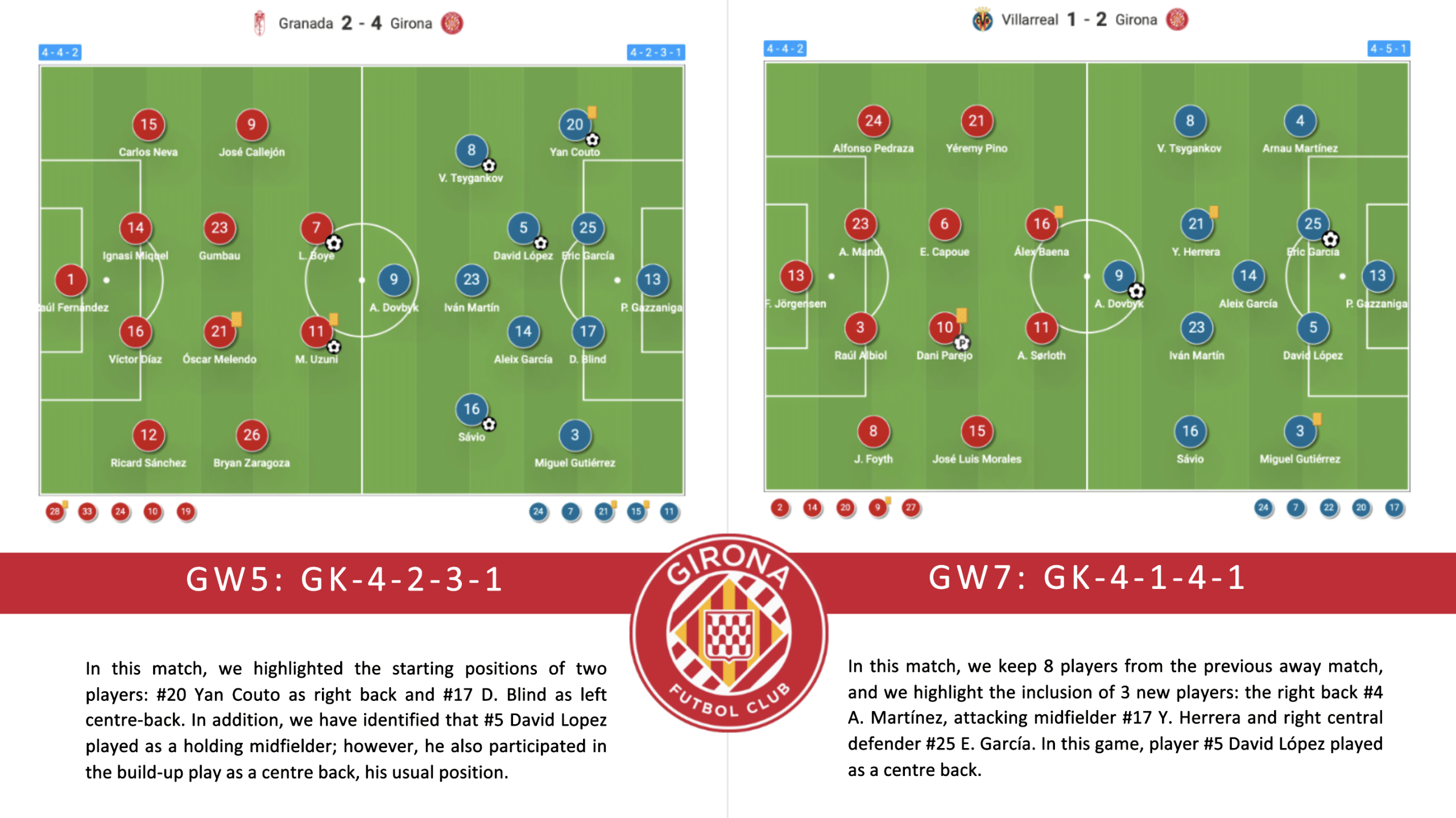Within an analyst’s work there are different types of analysis. Here we will talk about structural analysis and the parts that make it up. Structural analysis consists of analysing the main characteristics of the opposition we are going to face, such as the squad, the playing system and the basic structure, the players and their main characteristics, etc. It should not be confused with the analysis of the phases of the game, in which we analyse how the team plays in the different phases and moments of the play.
To do this, the structural analysis is made up of 7 main sections: the squad, the system of play and the basic structure, the position of the players, the variants and alternatives, the dynamic analysis of the team, the key aspects and the alternative system. Let’s define each one.
1. Squad
A team’s squad is made up of the total number of players that the coach is going to use throughout the season. This analysis will give us information on the profile of players the opponent has, their strengths and weaknesses, their contribution to the team’s play and participation in the game, most frequent areas of intervention, etc.
Figure 1. Positions that we must analyse of the opponent in order to determine the basic information to face them. Source: MBP Coaches’ School
Figure 2. Example of an analysis of Arsenal’s Oleksandr Zinchenko with his key data for part of the season 24-25. Source: Wyscout
2. The System of Play and the Base Structure
In this section, it is important to differentiate between the two concepts. While the system of play is the initial organisation that serves to assign roles and responsibilities to the players, the structure refers to the positioning that the team will adopt depending on the phase and moment of the play.
Therefore, the structure is related to the principles and sub-principles of each moment of the game and the system is linked to the arrangement of the players on the pitch.
Figure 3. Example of Arsenal’s system of play and structure at the moment of progression of the attacking phase, in a Champions League match in the 23-24 season. Source: Wyscout y MBP Coaches’ School
3. Positioning of the Players
Here, we analyse the possible starting line-up of the opponent and the potential substitutions based on the line-up they usually use in their matches according to the score and the dynamics of the game.
This will allow us to anticipate the possible starters and their positions, and to better prepare ourselves for possible collective and individual behaviours. At the same time, we can prepare our players for the direct duels that may occur during the match in relation to their direct opponent.
4. Variants & Alternatives
We need to consider what kind of changes the coach usually makes during matches and under what match circumstances. It is also important to know whether the type of changes may or may not affect the system of play, and whether they are one for one in specific positions or can affect the structure of the team.
5. Dynamic Analysis of the Team
Within the dynamic analysis of the team, we analyse three important aspects: the identification of intervals, the formation of sub-blocks and the changes of position and lines.
In the intervals, we analyse the distances between players both in attack and defence to identify the lines or positions that play with very short or long intervals, in order to gain advantages during the phases of the play.
Figure 4. Examples of Attacking Intervals (left) and Defensive Intervals (right). Source: MBP Coache’s School
The formation of sub-blocks happens when we identify that there are groups of players responsible for carrying out a specific function in the game, in any phase of the play. For example, if there are players who do not participate at any time in the defensive phase, staying well in front of the ball to prepare the counterattack.
There can be two types: functional and conditional. We observe the former when the team deliberately generates this behaviour with the intention of creating a specific situation. For example, if the team’s style of play revolves around taking advantage of attacking transitions and they have two very powerful and fast players, they may not participate in the defensive phase and instead wait for the moment when the team regains the ball to launch a counterattack.
The latter, on the other hand, are mainly due to two possible reasons: fatigue and the result of the match.
Figure 5. Example of Inter Miami defending with two sub-blocks in a 1-5-4-1 structure (left); and Girona, using a more compact single block in a 1-4-1-4-1 structure (right). Source: Wyscout
Still within the dynamic analysis, we find the changes of position and lines. These are players who change their position with another teammate or teammates to create certain advantages in attack or defence. These changes can be between players in the same line or even with players from different lines.
Figure 6. Example of Changes of Positions and Lines. Source: MBP Coaches’ School
6. Key Points
When analysing the opposing team, we need to categorise the players into three groups: strengths, weaknesses and contextual points.
On the one hand, we need to identify those players with the greatest potential and talent (strengths). At the same time, it is important to analyse possible weaknesses in the opposition players, either in specific moments or behaviours in which they may have difficulties to perform at the highest level (weaknesses).
And finally, among the contextual players, we will highlight those who have a decisive role in the implementation of the team’s game model and those who, due to their profile and participation in the game, are capable of modifying certain behaviours of the rival team.
7. Alternative Systems
The alternative system is the one that the team will use in case it adjusts its style of play according to the opponent it will face and the players available for that particular match.
Figure 7. Example of Girona FC in the 23-24 season, using two different systems for two different matches (players in blue). Source: Wyscout
Once we have gathered this information, we already have a fairly extensive knowledge of the opponent. However, the next step is to analyse their phases and moments of the game in order to be able to adjust certain behaviours or anticipate their main patterns of play.
Do you want to become a Professional Analyst?
Our Scouting and Game Analysis course will allow you to learn in depth the MBP analysis model and delve into the operation and use of professional analysis. You will discover the most advanced technological tools and learn how to use them to collect information, order it and interpret it according to methodological patterns and face the competition with a professional analysis of your own team and your opponents.
In short, in this course, you will learn the basics of match analysis and the collection of information from the competition to enable you to make coherent and effective decisions.

